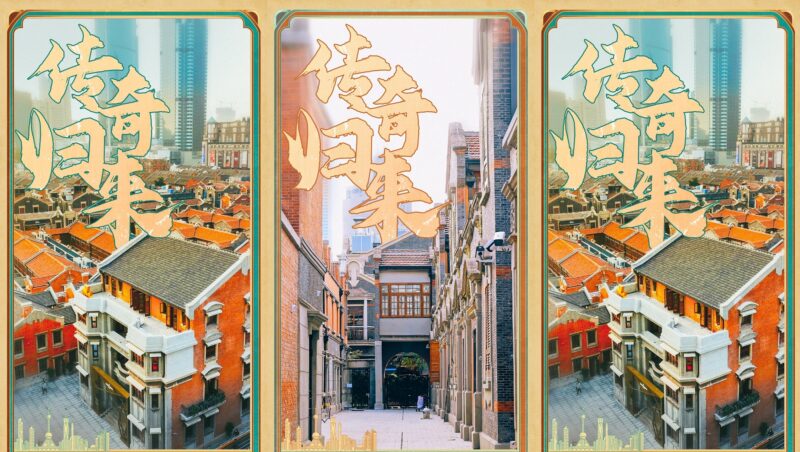As China bid farewell to zero-COVID policies with borders reopened and all COVID quarantine measures abandoned from 8 January, the first Lunar New Year (aka Spring Festival) in three years which no longer required citizens to “Stay Local”, saw pent-up demand for travel.
Travel-related bookings saw a 6-fold surge in the lead-up to the celebration. Of which, cross-provincial orders made up nearly 80%, while overseas trips saw record high bookings in three years according to a report by Alibaba-owned online travel agency Fliggy on 11 January.
With eager travellers re-exploring inside and outside the country during the largest annual celebration and one of the longest national holidays, Dao Insights outlines some of the top destinations that drew in the highest footfall during the festive season.
Searches for domestic long-distance travel products increased 20 times as of 8 January, with “islands” topping the trending list.
Winter-sun destinations
Places with warm weather have been the backbone driving the recovery of long-distance trips as tourists seek to escape the winter cold. Searches for domestic long-distance travel products are reported to have increased 20 times as of 8 January, with “islands” topping the trending list.
The top three most visited regions are those famous for its tropical climate, including Xishuangbanna (an autonomous prefecture in Southwestern Yunnan province also known for its Dai ethnic culture), Sanya, a renowned tourism hotpot situated in the Southern end of Hainan province, and Dali, a city also in Yunnan province which has mild winters.
Meanwhile, niche islands have also been the go-to for young travellers and those travelling with families who want to avoid the crowds at mainstream resorts, while not missing out on the sunshine. As a result, Weizhou Island (the largest island of Guangxi Zhuang Autonomous Region in Beihai city), Nan’ao Island (a county of the prefecture-level city of Shantou in Guangdong province), and Qiandao Lake (or Xin’anjiang Reservoir, a human-made, freshwater lake in Hangzhou, Zhejiang province) were the most popular destinations.
Natural ice wonderlands such as Harbin, and humanmade ice and snow resorts retain their appeal.
While others such as Aranya, Boundary Island, and Dongshan Island are also among the top 10 attractions for those island goers, as per Mafengwo the dubbed “travel bible” by younger Chinese netizens.
Winter wonderland with ice and snow
In sharp contrast to those swarming to warmer climes, others have decided to embrace the wintry chill, propelling ice and snow tourism to become a trending travel theme too. Changbai Mountains, a major mountain range in Northeast Asia spanning the Northeast Chinese provinces of Heilongjiang, Jilin, and Liaoning has been one of the sites drawing in the most interest from long-distance trip-goers.
The active stratovolcano on the Chinese-North Korean border saw overall searches up by 100% on the eve of the festive weekend starting on 21 January. Of which, 90.3% of queries were from tourists outside the region, with dwellers in the coastal province of Guangdong making up the highest percentage at 13%, as per state media People’s Daily.
Historic scenic towns such as Wuzhen, Gubei Water Town, and Furong Ancient Town see the most nostalgic visitors.
While other traditional, natural ice wonderlands such as Harbin, capital of China’s Northernmost province Heilongjiang retains its appeal, humanmade ice and snow resorts in major cities have emerged as tourism hotspots too. Beijing Shichahai Ice Stadium recorded a 76% increase in online searches during the festival week while indoor ski fields in Guangzhou and Changsha were also gaining steam, up 50% in related queries, according to Tongcheng Travel.
Hidden gems for cultural tourism
Small counties and towns demonstrating traditional folk culture and historical heritage have also been sought after during the latest travel boom. Searches for “New Year-themed ancient town” increased by 50%.
Wuzhen, a historic scenic town in the North of Zhejiang province, Gubei Water Town, located in Simatai Village at the foot of Simatai Great Wall in Beijing, Furong Ancient Town, in Northwest Hunan province, Zhouzhuang, a town in Jiangsu province famous for its canals, and Nanxun, a historic town in Zhejiang province are places seeing the most nostalgic visitors.
Also under the spotlight are cities with rich history, such as Xi’an, home to the Zhou, Qin, Han and Tang dynasties’ ruling houses and also marks the end of the Silk Road’s Eastern end, and Luo Yang in the West of Henan province and is one of the cradles of Chinese civilisation, along with others including Jinan in Shandong province, Chengdu, capital of the Sichuan province and Zhangjiajie, in Northwest Hunan province famed for its jagged quartzite, sandstone columns.
Travel packages incorporated with intangible culture and national history have drawn in great interest.
Travel packages incorporated with intangible culture and national history have also drawn in great interest among China’s young tourists, according to Fliggy. Meanwhile, registration for activities with cultural experiences including dressing up in Han costumes and traditional handicraft making has also doubled compared to last year.
Neighbouring regions for outbound travel
Tens of thousands of people crossed borders in both directions between Hong Kong and Mainland on the same day that cross-border quarantine requirements were removed. This was coupled with the resumption of the processing of endorsements for Chinese mainland residents to visit the Hong Kong Special Administrative Region for tourism and business purposes.
Fast channels at ports adjacent to Hong Kong and Macau are also set to return to normal with passenger clearance at water ports and entry and exit of international cruise passengers at selected ports are also set to resume in a timely manner.
Hong Kong and Macau take the top spots on the list of popular outbound travel destinations among Mainland tourists.
It was reported that nearly a million Mainland Chinese residents applied for entry permits to Hong Kong, Macau, and Taiwan – up 147.6% since before the implementation of the policy change, according to Liu Haitao, director general of the National Immigration Administration’s department of frontier inspection and management.
Following the easing of travel restrictions, Hong Kong and Macau have taken the top spots on the list of popular outbound travel destinations among Mainland tourists. While surrounding countries in Asia such as Thailand, Singapore, and Malaysia are also desired by those who are looking for an exotic experience.
Bookings of flights to Hong Kong made by yearning Mainland tourists clocked a 31-fold year-on-year increase, and reservations for hotel and tourism attractions also recorded more than double growth, as per Ctrip. Meanwhile, Macau saw inbound travellers from Mainland up by 97% and hotel bookings up by 57%, while ticket purchases for scenic visits rose by more than 133% compared to last year’s Spring Festival.









